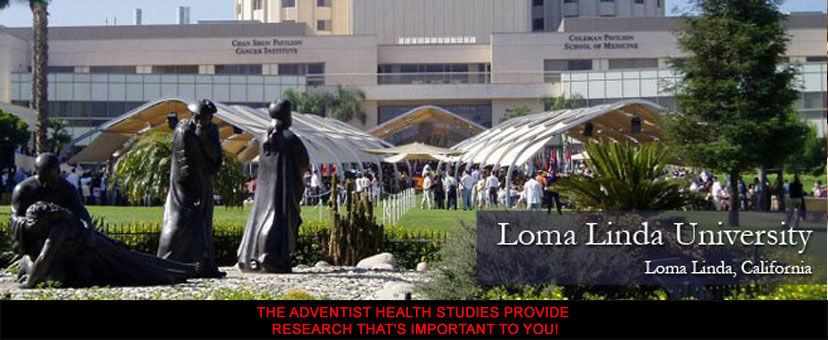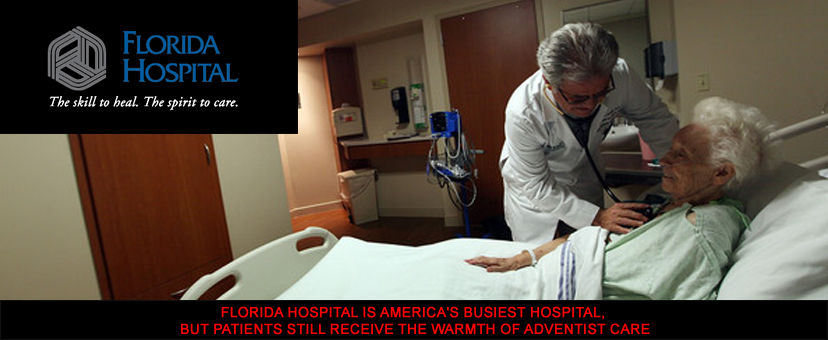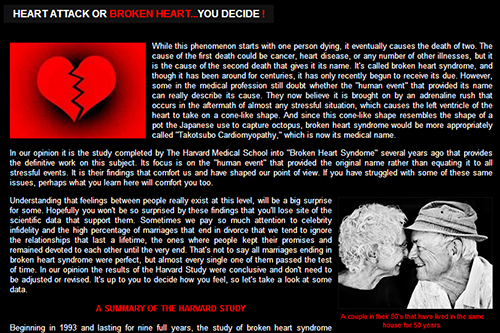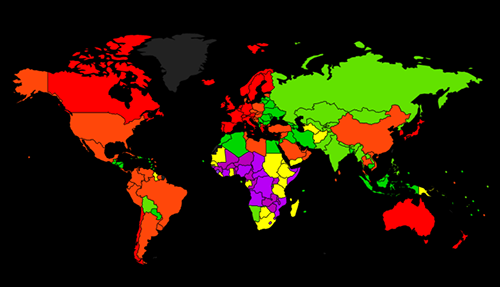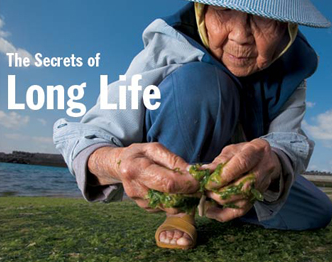We are not members of the Adventist religion, but it is important to remember...In some parts of the world over 50% of the male population still smokes, millions of people still die from tuberculosis and malaria, 2,000,000 die from aids and many believe having unprotected sex with a virgin is the cure, even in some highly educated countries hearing the words breast cancer is comparable to being sentenced to death...how is this possible, haven't they heard of medical research? What is medical research anyway, who are the people who conduct these studies, how long do they take and what do they cost, who pays for them and who are the human beings that become the subjects of these studies? How are they selected, are they sick or healthy when the studies begin, do we pay them or do they volunteer, how many of them do we need for the study to be valid and are they endangering their own lives, so we can improve or save ours?
The answer is all of the above, depending upon what we're trying to learn. But there is much more to it than getting people to respond to a TV Ad thinking they can earn some easy money. Serious studies take years to tabulate and complete and who the subjects are is vital to their success. Almost all of the people that participated in the studies that helped us define what good health means today were Volunteers and many of us are alive today because of them. Who are they, where are they now and how do we round some of them up to say thank you? For obvious reasons that's not easy to do, but we can be pretty resourceful at times...Meet the Adventists!
THE ADVENTISTS AND WHAT THEY MEAN TO YOU!

THE MOTTO OF LOMA LINDA MEDICAL SCHOOL
You don't have to be a member of the Adventist religion for them to have a powerful influence on your life... Due in part to their unique dietary habits lowering their risk for certain diseases, they provide a special opportunity for medical science to get answers related to how diet and other habits might affect the rest of us. Add the fact that Seventh-day Adventists live longer than virtually any group of people on the planet and it is easy to understand why they are one of the most heavily researched populations on earth. There has likely never been a series of scientific medical studies that provided more useable health benefits to as many people than those conducted on the Seventh-day Adventists over the last 50+ years. And there have almost certainly been none that have undergone such comprehensive, worldwide scientific peer review. Much of the increased life expectancy of humans over the past century is due to medical research and what is written here about the Adventist Health Studies is based upon documented scientific fact. The contribution these humble servants of God and mankind have made to the health of us all has gone largely unnoticed, outside the halls of medical science, and what follows is an attempt to give them their due.
We are not Adventists and we have no interest in promoting one religion over another. But we can tell you that the fact that they are a religion, rather than a specific ethnic group, is of enormous value to medical research. It may even be a key reason for the Adventist Health Studies being held in such high regard. One group of scientists who did a study of Adventists living in Norway put it this way:
"Examination of the figures also suggests that there has been no genetic selection, a conclusion which American observers have also reached. Their longevity cannot be due to the fact that they belong to a privileged social class, since an examination of their distribution among social classes revealed no advantage over the general population. Nor could their geographic distribution in Norway explain the difference. These natural experiments are much more instructive and reliable than experimental studies of the type of controlled clinical trials."
It is simply an irrefutable scientific fact that the uniqueness of the Adventist population has allowed and will continue to allow the discovery of relationships between certain lifestyle behaviors, health and disease that are not easily determined from other populations. It is for this reason we decided to learn more about them and we are pleased to share some of our research with you. We think you'll be as amazed as we were when you discover where so much of what we accept as basic truth about our health comes from and who the people are that provided that information. We also believe that those who give so generously of themselves to help others deserve to be recognized for what they do and the contribution the Adventists have made to global health, over such a long period of time, makes them worthy of being singled out in this regard. We hope you agree and will join us in saluting these healthy, happy people for the contribution they've made to each of our lives.
"Sometimes God calms the storm...Sometimes He lets the storm rage and calms His child"
You will have to speak to a member of the church if you want to explore the Adventist faith in greater detail than we are qualified to provide. We can tell you they are a biblically based denomination of Christianity and their beliefs include their interpretation of what God intended regarding health and lifestyle. One of their core beliefs is they take "God at His word" that your body is your temple and not taking care of it is an insult to God. They point to passages within the Bible related to eating mostly fruits, vegetables, whole grains and nuts and avoiding food that's bad for you. Having a full day of rest on the Sabbath, which to an Adventist is Saturday instead of Sunday, is a key belief, and so is getting enough exercise. We believe what delivers such amazing health benefits is that taking care of their bodies is built into their faith, so they follow the rules more carefully than most of us do. The results speak for themselves in the good health they enjoy and since these rewards take place during their lifetime they seem to act as an affirmation that they've chosen the right faith. Anyway the data we reviewed indicates they are one of the fastest growing religions in the world, so they must be doing something right. The Adventist faith isn't for everyone, but they have something to teach us all about how to live longer and healthier lives.
Before we begin our own review of the data we felt it was important you know we aren't alone in our admiration for them. The World Health Organization, US National Institutes of Health, National Cancer Institute, National Institute on Aging, the governments of Norway and the Netherlands and many other countries, the Harvard Medical School and numerous other academic institutions we don't have space to mention, feel the way we do. And of course the role of Loma Linda University, the home of the Adventist Medical School, is vital to this process, without them much of this would not be possible. We provide links to their website at the bottom of the page that will give you access to around 200 abstracts of peer reviewed scientific opinions you may want to review. We decided to begin our own review with their relationship to the "Blue Zones".
THE BLUE ZONES
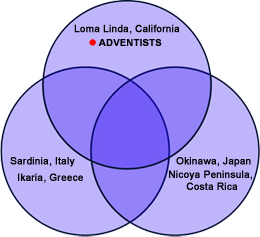
THE LONGEST LIVING PEOPLE ON
EARTH CALL THESE PLACES HOME
A Blue Zone is a "longevity oasis" and the people who live there have the longest life expectancies on earth. There are only five official Blue Zones in the entire world and they are located in regions of different countries where people commonly live active lives past the age of 100. It took several years of research for scientists and demographers to find and classify these longevity hot-spots because each required intense study to determine the healthy traits and life practices they had in common that caused them to lead healthier and happier lives. Dan Buettner wrote a book about the Blue Zones and if you're into longevity it is a must read.
Only one of the Blue Zones is located in the United States. It was found when researchers, who were studying a group of Seventh-day Adventists in Loma Linda, California, discovered they suffered from a fraction of the diseases that commonly kill people in other parts of the United States and throughout the developed world. Prior to this discovery the extent of the long and healthy lives these amazing people live was not well known to the general public. Loma Linda is the home of Loma Linda University and Adventists make up the majority of the population living there. In addition to being where the Adventist Medical School is located, the university graduates one of the highest percentages of registered dieticians and nutritionists in the country.
Another Blue Zone was discovered in the mountains of Sardinia, Italy where even men reach the age of 100 at an amazing rate. The longest living women were found in Okinawa, Japan and another Blue Zone was discovered on the Nicoya Peninsula of Costa Rica in 2007. The final Blue Zone was found on an expedition to the island of Ikaria, Greece where they have 50% lower rates of heart disease, 20% less cancer, and almost zero dementia.
The Blue Zones have had significant national media coverage, including ABC News, World News Tonight and many more. Since Loma Linda is the only American Blue Zone, they have been singled out many times, including significant mention in a special National Geographic feature article, "The Secrets of a Long Life". You can learn much more about all the Blue Zones many places online or by reading the book.
WHAT WE HAVE LEARNED FROM THE ADVENTISTS
The first major study of Adventists that benefits us today is known as the Adventist Mortality Study. It began in 1960 and consisted of 22,940 California Adventists. It entailed an intensive 5-year follow-up and a more informal 25-year follow-up. The study (1960–1965) indicated that Adventist men lived 6.2 years longer than non-Adventist men in a concurrent American Cancer Society Study and Adventist women had a 3.7-year advantage over their counterparts.
Death rates of Adventists compared to other Californians from the original study:
- Death rates from all cancers was 60% lower for Adventist men and 76% lower for Adventist women
- Lung cancer 21% lower
- Colorectal cancer 62% lower
- Breast cancer 85% lower (further study reduced this percentage dramatically)
- Coronary heart disease was lower, especially for Adventist men
An additional study (1974–1988) involved approximately 34,000 Californian Adventists over 25 years of age. Unlike the mortality study, the purpose was to find out which components of the Adventist lifestyle give protection against disease. The data from the study has been reviewed for decades and many of the findings linking diet to cancer and coronary heart disease still guide our thinking today. For example:
- On average, Adventist men live 7.3 years longer and Adventist women live 4.4 years longer than other Californians
- Five simple health behaviors promoted by the Seventh-day Adventist Church for more than 100 years including not smoking, eating a plant-based diet, eating nuts several times per week, regular exercise, and maintaining normal body weight, can increase life span up to 10 years
- Increasing consumption of red and white meat was associated with an increase of colon cancer
- Eating legumes was protective for colon cancer
- Eating nuts several times a week reduces the risk of heart attack by up to 50%
- Eating whole meal bread instead of white bread reduced non-fatal heart attack risk by 45%
- Drinking 5 or more glasses of water a day may reduce heart disease by 50%
- Men who had a high consumption of tomatoes reduced their risk of prostate cancer by 40%
- Drinking soy milk more than once daily may reduce prostate cancer by 70%
Adventist Health Air Pollution Study (ASHMOG)
This was a sub-study of AHS-1 conducted from 1976 - 2000 which included 6,328 Adventists from California. The study was funded by the Environmental Protection Agency. The study linked the effects of various indoor and outdoor pollutants with respiratory diseases and lung cancer.
Another even more comprehensive study known as Adventist Health Study 2 involving roughly 100,000 volunteers is underway. It continues to explore the relationship between diet, lifestyle and disease among an even broader base of the Seventh-day Adventist population across the United States and Canada and because the Adventist population is so ethnically diverse, it will be the first major study of its kind that includes race as a criterion. It takes years to gather all the data and calculate the outcomes, but all parts of the medical science community are anxious to get their hands on the results. And there will no doubt be more studies after that, here in America, and in other parts of the world...

THE ADVENTIST CONTRIBUTION TO GLOBAL HEALTH
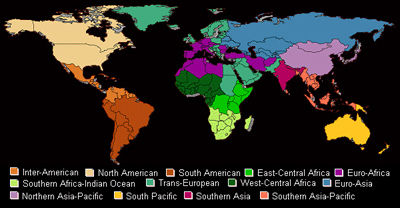
Promoting religious beliefs in foreign countries is not always well received. Some countries feel as though it infringes on their identity and alters the history of their beliefs. But the Adventists bring more than just new churches they also build hospitals and schools and bring disaster relief as well.
Today, the worldwide Adventist Church has over 15 million members in more than 200 countries. They operate 7,200+ schools and universities worldwide with nearly 1.5 million students. In fact, Adventists run the next-largest denominational education system in the world, second only to Catholic schools. They also run 168 hospitals worldwide, 138 nursing homes and retirement centers, 442 clinics and dispensaries, and 34 orphanages and children's homes. In addition, the Adventist Development and Relief Agency (ADRA) International, a disaster relief organization, funds over 2,400 projects in 112 countries.
Adventist hospitals and clinics are numerous here in the US, including Florida Hospital, America's busiest hospital. You'll find at least one Adventist healthcare center in many major metropolitan areas in North America. The church is well known for its excellence in healthcare, education, and human service activities. One of the founding principles of the Adventist church is a healthy lifestyle—a balanced combination of exercise, diet, and trust in God. They operate successful stop-smoking clinics worldwide and they continue to be active in providing schools and hospitals where they are needed around the world. Although the Seventh-day Adventist church was born in America most of their growth has taken place in other parts of the world. According to recent church statistics somewhere in the world, someone is baptized by total immersion into the faith every 30.33 seconds, and a new Adventist church is organized every 3.99 hours. "We are not an American church with foreign missions. We are a world church with a world mission."
A PRODUCT OF THEIR RICH HISTORY
From the very beginning, Adventists have focused on the importance of education and healthcare in improving people's lives. They have championed the poor all over the world and were leaders in the early days of the civil rights movement here in the United States. Sadly, their generosity and love of country has been taken advantage of from time to time. Adventists volunteered for a US military study in 1954 where their generous spirit and attitude of "what's good for the country" didn't go as well as planned. Interestingly, the 2,200 Adventist soldiers who agreed to be infected with unknown and potentially life threatening diseases were less concerned about the risk to their own lives, when things went wrong, as they were about the lives of others. They were very disappointed when they learned one of the purposes of the experiments may have been to discover ways to develop new biological weapons...enough said.
Another military example offers additional insight into their courage. The Conscientious Objector classification is used by some people to avoid military service altogether. Others want to serve their country, especially in a time of war, but they object to participating in killing people in combat. The risks of combat aren't limited to those who carry a weapon, arguably the most at risk are members of the medical corps. A high percentage of Adventists chose to serve in the medical corps during many of our wars. The Congressional Medal of Honor is America's highest military award. The first Congressional Medal of Honor ever given to a non-combatant was given to a member of the medical corps for acts of bravery, above and beyond the call of duty, during the Second World War. His name was Desmond Doss. He was an Adventist. Tom LeDuc


